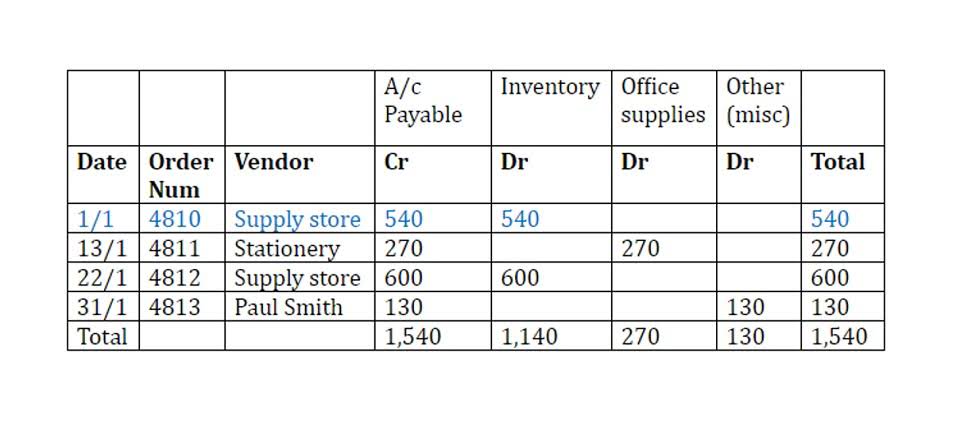
However, when customers are past due it is a sign that they are experiencing some financial difficulties. The greater the amount of time they are past due, the greater the possibility they will not pay the amount they owe the company. For instance, if payment was due on January 15th, and it’s now January 25th, you would mark it as being 10 days past due. For example, you may allow clients to pay for goods 30 days after they’re delivered. This represents an asset to your business since you’ll be receiving payment in the future. Let’s consider a hypothetical example of a company using the aging method to analyze its accounts receivable.

Changing Supplier Payment Terms
Sandra Habiger is a Chartered Professional Accountant with a Bachelor’s Degree in Business Administration from the University of Washington. Sandra’s areas of focus include advising real estate agents, brokers, and investors. She supports small businesses in growing to their first six figures and beyond.
- The aging of accounts receivable sorts the company’s accounts receivables by customer and then by time since the sales invoice was issued.
- This synchronization can lead to more favorable payment terms, such as extended due dates or volume discounts, which further enhance cash flow management.
- The aging method serves as a cornerstone in the domain of accounts receivable management.
- The total derived from this calculation should match the amount stated in the allowance for doubtful accounts contra account, which is paired with and offsets the trade receivables account.
- These changes can be made for all of your accounts or could be implemented for only high-risk customers who regularly struggle to make payments on time.
- Management should match their credit terms to the periods of the aging reports to get an accurate presentation of the accounts receivable.
- Aging schedules allow companies to stay on top of A/R in hopes of limiting doubtful accounts.
Accounts receivable aging explained: What it is, how it works, and how to calculate it
The net of these two account balances is the expected amount of cash that will be received from accounts receivable. Accounting software will likely have a feature that generates the aging of accounts receivable. Generally, the longer a sales invoice goes unpaid, the greater the chance that the company will fail to collect what it’s owed. Manage expense report templates, approval rules,and conversion rates and policies. If applicable, opt into using corporatecards for expenses, processing of expense receipt imaging, or integrationwith travel.
What Information Does An Accounts Receivable Aging Report Contain?
By knowing the percentage of receivables that might be uncollectible, the business can look for solutions to their cash-flow issue before the problem spirals out of control. For certain industries, such as retail or manufacturing, aging schedules can play a significant part in setting credit standards. If a company notices it has a consistent problem with a large number of delinquent accounts, it may look at raising its standards when it comes to a customer’s credit score. The aging method is used to estimate the number of accounts receivable that cannot be collected. This is usually based on the aged receivables report, which divides past due accounts into 30-day buckets. By multiplying the total receivables in each bucket by the assigned percentage, the company can estimate the expected amount of uncollectable receivables.
Accounts Receivable Aging: Definition, Calculation, and Benefits
This report helps businesses identify invoices that are overdue for payment and assess the financial health of their receivables. As a small business owner, there’s nothing more disgruntling than not getting paid. Business owners aging of accounts receivable use accounts receivable aging reports to determine which customers have invoices with outstanding balances. This collection tool makes it easy for businesses to identify late-paying customers and set invoice payment terms.
- Armed with knowledge about when cash is likely to be received, businesses can negotiate payment terms with suppliers that are synchronized with their cash inflows, thus maintaining a healthy cash balance.
- If you go through your aging report and notice a single client is responsible for most of your late payments, you can proceed with any necessary measures.
- The final step is to repeat the process from step 3 for all of your clients having unpaid invoices on their accounts.
- You group your customer invoices into date ranges rather than listing specific dates for when an invoice is due.
- If the same customers repeatedly show up as past due in an accounts receivable aging schedule, the company may need to re-evaluate whether to continue doing business with them.
- So your cells spend a lot of energy each day preventing, recognizing and fixing those problems.
Once your accounts receivable aging report is ready, you’ll be able to spot which customers are late, how late they are, and how much they owe. You can then take action to get your outstanding payments addressed, such as sending a follow-up invoice or reaching out to a collection agency. An additional use of the accounts receivable aging report is by the credit department, which can view the current payment status of any outstanding invoices to see if customer credit limits should be changed. This is not an ideal use of the report, since the credit department should also review invoices that have already been paid in the recent past. Nonetheless, the report does give a good indication of the near-term financial situation of customers. Accounts receivable aging is a cash management technique used by accountants to evaluate the accounts receivable of a company and identify existing irregularities.
Implementing automation for efficient aging processes

Leave a Reply